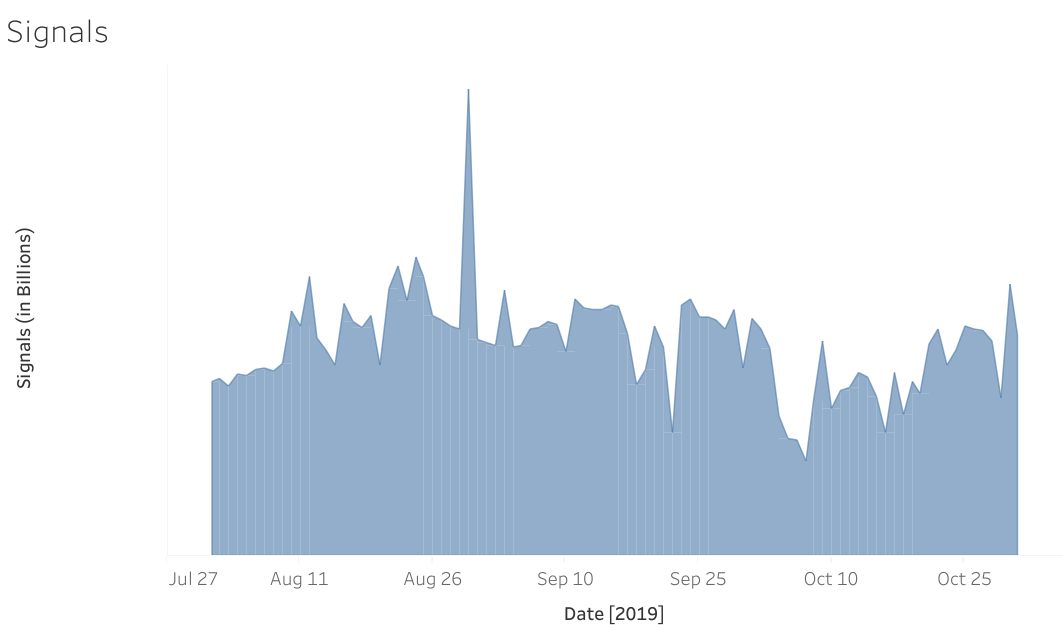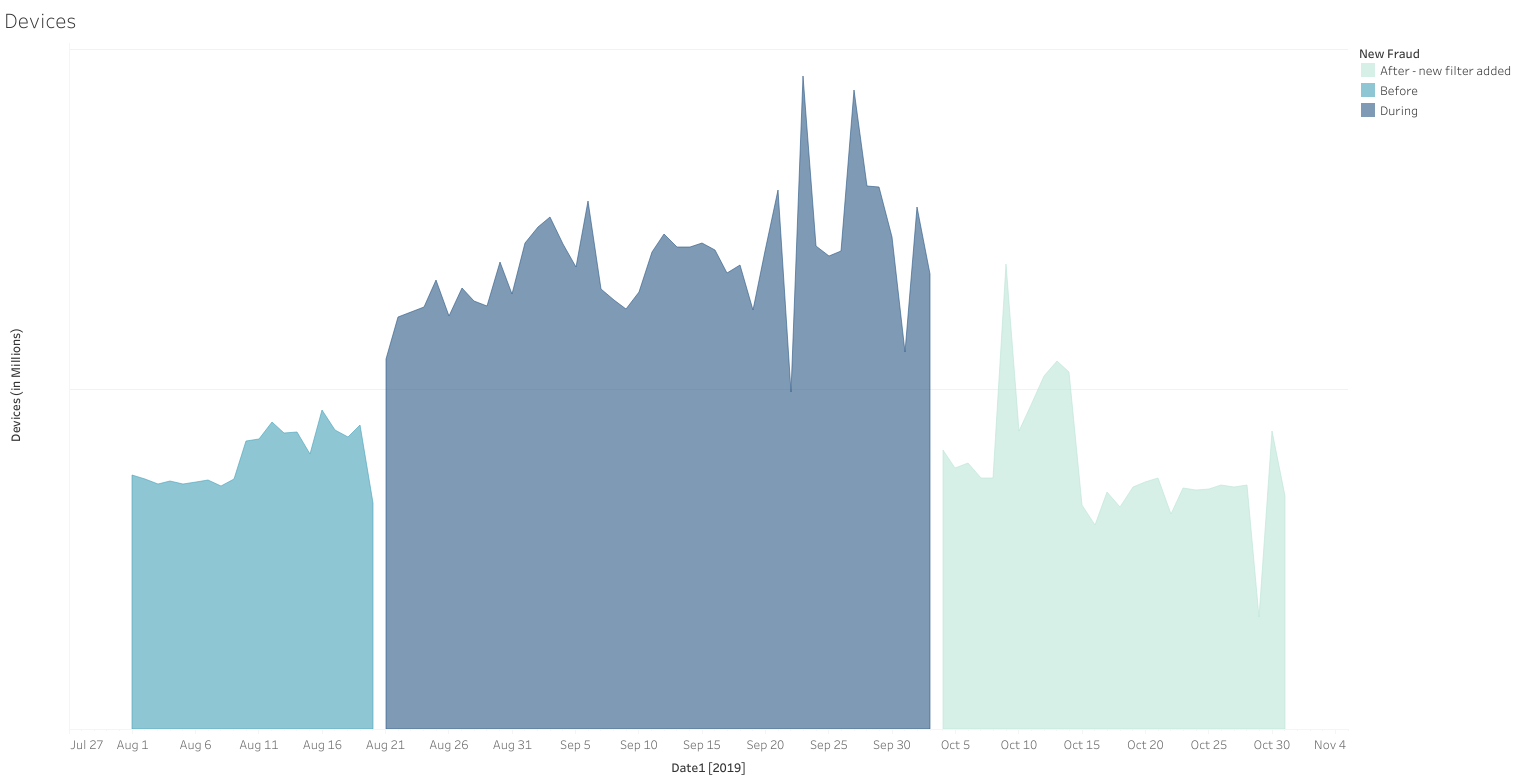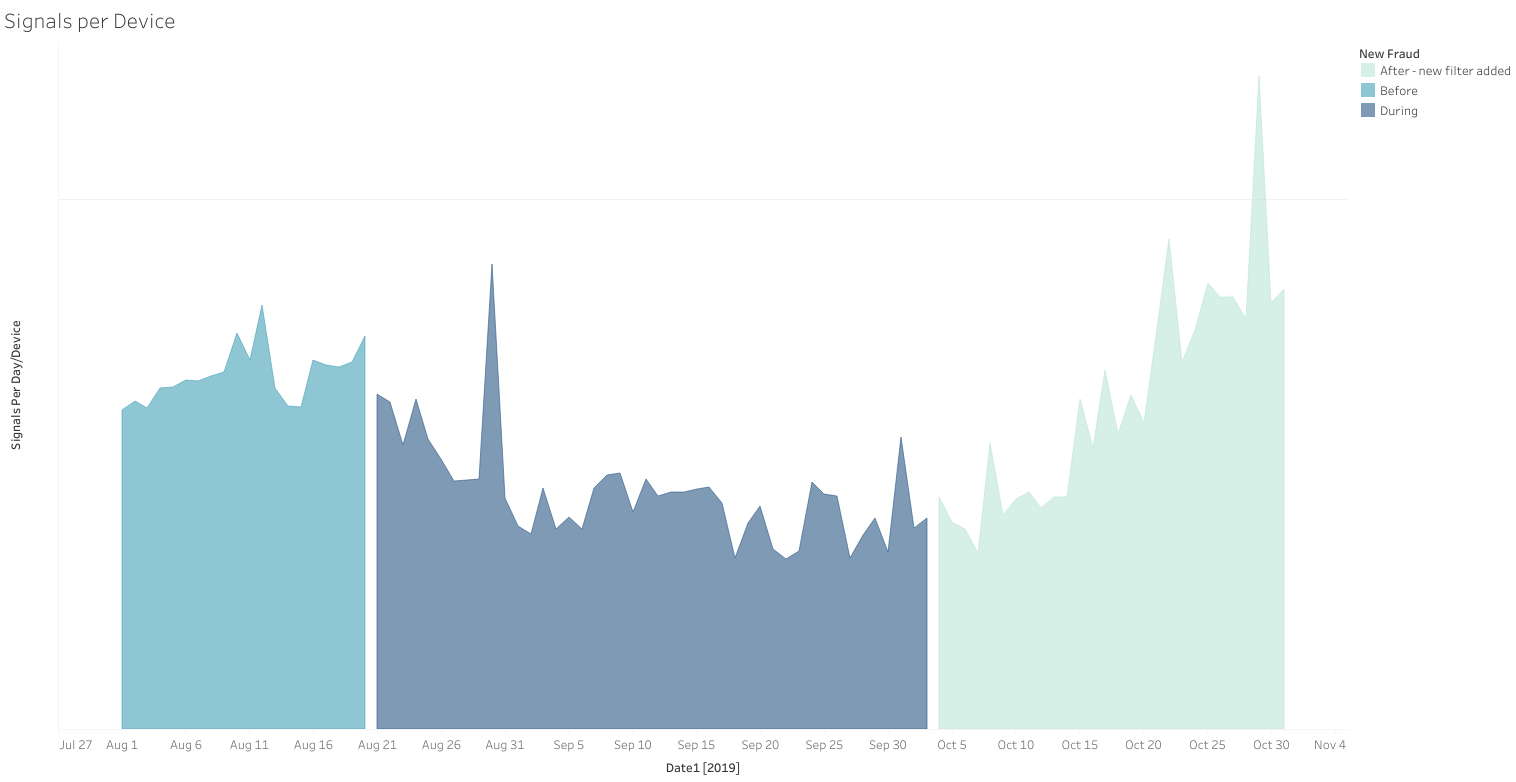Detecting Mobile Location Data Fraud: A Case Study
March 3, 2020

Here at Gravy Analytics, we process billions of location signals every day. Day-to-day fluctuations in the number of location signals we receive are normal. However, sometimes Gravy has to investigate these changes to determine if the signals are good or fraudulent. As we investigate signals, we determine the causes and adjust our data processing algorithms as needed. These algorithms flag bad or suspicious location data so that our clients don’t have to worry about the quality of the location signals they receive.
Let’s take a look at how Gravy investigates problematic signals.

A Strange Spike in Signals
Toward the end of August 2019, we noticed a significant spike in location signals from mobile devices (refer to Figure 1). Upon further investigation, we discovered that the number of signals processed by our platform increased by about 45% overnight. This dramatic increase was well outside of the normal daily variance in signals and made us wonder about the underlying cause.

Figure 1. Increase in location signals at the end of August 2019.
How We Resolved It
The spike in location signals in August roughly aligned with the release of Apple’s iOS 13, which introduced new location services controls for iPhone users. Initially, Gravy had expected total location signals to decrease because of iOS users who had to grant additional permission to use location services. Instead, total location signals increased: it seemed that fraudsters – perhaps hoping to capitalize on a gap between advertiser demand and available ad inventory – took the opportunity to commit ad fraud.
At the end of September, we implemented our solution to combat these fraudulent signals. As shown in Figure 2, the number of fraudulent devices decreased once the change was in place. Figure 3 shows how the number of signals received per device recovered once the solution was implemented.

Figure 2. Comparing the number of devices before and during the fraudulent activity, and after the algorithm was updated.

Figure 3. Comparing signals per device before and during the fraudulent activity, and after the algorithm was updated.
Moving Forward
Ultimately, customers who use our Observations dataset can still see these fraudulent signals and their associated flags. This allows customers to decide whether or not they want to include them in their analyses. If a customer wants to use the data for fraud prevention or detection, then they can use only those signals or devices flagged as fraudulent. Customers using the data for non-fraud related purposes, such as foot traffic data analysis, can easily exclude them.
Mobile fraud is always going to be adapting to the digital landscape. Fraudsters are going to continue to test their methods and make adjustments to them. For this reason, Gravy is always on the lookout for suspicious mobile activity.
Want to make sure that you are one step ahead of mobile fraud? Make sure that your location data provider shares your values and is vigilant about fraud.
Request a consultation with a location data expert today and learn how Gravy can help you identify mobile fraud within your location data.




